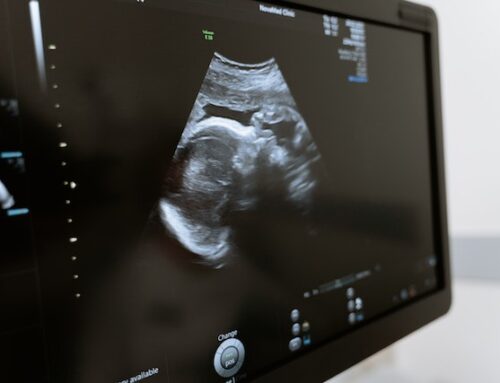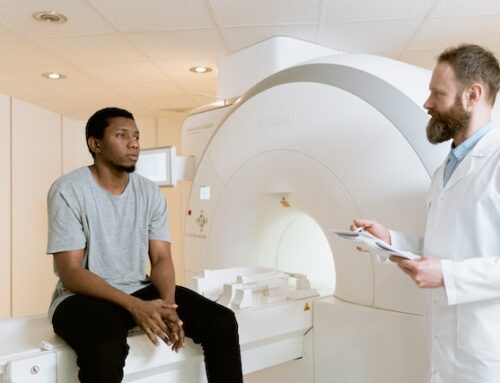By: Liane Philpotts, MD, FSBI, FACR
With a few exceptions, the overwhelming answer is… YES!
3D mammography, or digital breast tomosynthesis, has been shown by many research studies to improve the results of mammography when compared to usual 2D digital mammography. If a woman chooses to have mammography, she should have the best possible outcome and that means 3D instead of 2D in almost all cases.
In terms of the patient experience, the difference between a 2D or 3D mammogram is minimal. In fact, even after their exam, some women do not know they had 3D mammography – it seems just the same as a 2D mammogram. The positioning and compression are the same. The new flexible paddles on some 3D tomosynthesis equipment may make the compression actually more comfortable for some women.
Fewer False Alarms
The information provided by 3D mammography is unquestionably better than 2D. There are significantly fewer false alarms – recalls due to non-cancerous findings. False alarms produce anxiety, inconvenience and costs to women and the healthcare system. Tomosynthesis cuts these recalls by up to 40% (or more in women undergoing their first mammogram). Rather than the flat, single picture of the breast that 2D mammography produces, 3D mammography creates many pictures and so permits seeing through the tissue of the breast in thin layers. For example, what may appear as a questionable spot on a 2D mammogram that needs to be looked at further with additional mammograms may look normal on a 3D mammogram and not need anything further. Many false alarms on 2D mammograms simply represent normal areas of breast tissue that are on top of each other on the single picture. With 3D mammography, the area can be clearly seen to be normal because the radiologists can see layer by layer through the tissue. Such unnecessary recalls are avoided with the use of 3D mammography.
Better Cancer Detection
Probably even more important to women having screening is that 3D mammograms are better at finding breast cancer. Particularly in areas of dense tissue, which look white on a mammogram, tomosynthesis will find some cancers that otherwise would have been hidden. This is especially true for invasive cancers, the ones that could spread and be lethal, which are found at a rate of up to 40% more with tomosynthesis. This means better and earlier detection and potentially more lives saved from breast cancer. But the tissue doesn’t have to be very dense to see a benefit with tomosynthesis. Even women with lesser amounts of dense tissue can have better results. That said, tomosynthesis still does not detect allcancers in all women, and many women with dense tissue may still benefit from other tests such as ultrasound.
Beyond Screening
While the benefits of tomosynthesis in screening mammography are two-fold – fewer false alarms and finding cancer better – the benefits go beyond the screening exam. For those women who do have a real finding at screening requiring recall, many may be able to avoid additional mammograms and simply have ultrasound. Because screening tomosynthesis can serve to both pinpoint and characterize abnormalities, additional testing is reduced, saving radiation and costs. Furthermore, the better performance of 3D tomosynthesis compared with 2D digital mammography means that fewer women need earlier follow-up tests (e.g. mammograms in six months). It also improves the accuracy of biopsy recommendations. More precise biopsy recommendations decrease the number of biopsies in women who do not have cancer. This is another advantage with tomosynthesis.
Who wouldn’t need a tomosynthesis mammogram?
So 3D mammography is clearly a better test. Why wouldn’t everyone have it? As 3D mammography is usually performed in combination with 2D, the radiation dose is essentially doubled. While it remains within accepted standards, it is higher than 2D alone, and women who are particularly concerned about radiation dose may consider this important. Some tomosynthesis equipment is approved for generating synthetic 2D images from the 3D data, thereby reducing the total radiation dose to a rate similar to 2D digital mammography. Women concerned about radiation should consult with their Breast Imaging facility to see if they offer this “synthetic” technology. Again, due to the increased radiation dose, women who require additional images to complete an exam, such as women with very large breasts or with implants, may not opt for tomosynthesis as further increase in radiation may not be desired.
An additional concern is the added costs of tomosynthesis. As the equipment is more expensive and the exams require more time to interpret than 2D, there is an increased cost to providing tomosynthesis. Some facilities will charge the patient for a tomosynthesis exam. While Medicare is paying the additional tomosynthesis fee, many private payers are not. Insurance coverage for tomosynthesis is widely variable across the country. Even if insurance companies are supposed to be covering tomosynthesis, they may apply the charge to a patient’s deductible. It is wise for women to check out potential costs with both the breast imaging facility and with their insurance provider before undergoing tomosynthesis.
Best Experience
Of course, any technology is only as good as the person interpreting it. Going to a breast imaging center with dedicated breast imaging staff and radiologists will increase the chances of getting a better exam with a more accurate interpretation, and gain the full benefit of 3D tomosynthesis.
Full article at : https://www.sbi-online.org/endtheconfusion/Blog/TabId/546/ArtMID/1586/ArticleID/516/Should-I-get-a-tomosynthesis-instead-of-just-a-mammogram.aspx
Dr. Philpotts is a Professor of Radiology and Biomedical Imaging and Chief of Breast Imaging at the Yale School of Medicine.
All-inclusive Rates
Nationwide
Rates starting from :
$265 MRI
w/o contrast
$130 CT Scan
w/o contrast
$140 Mammogram
Screening or diagnostic
$115 Ultrasound
Most Body Part
$33 X Ray
2 views
✓ Board Certified Radiologists
✓ Accredited Imaging Centers
✓ Low Affordable Rates
✓ MRI, PET, CT Scan & X-Ray
What is the Radiology Assist Program ?
- Radiology Assist is a free resource available to the under-insured
community giving individuals access to affordable diagnostic imaging.
- The program offers the following radiology imaging at a low discounted rate :
1. MRI
2. CT Scan
3. PET Scan
4. Ultrasound
5. Xray
6. Mammogram
- Our low affordable rates are available at any participating imaging centers
when appointments are scheduled through the program. There is no fee to use
the program.
- The program is intended to assist the under-insured control the cost of imaging in their time of need.
| All-inclusive Rates Nationwide Rates starting from : |
|
| $265 | MRI w/o contrast |
| $130 | CT Scan w/o contrast |
| $140 | Mammogram Screening or diagnostic |
| $115 | Ultrasound Most Body Part |
| $33 | X Ray 2 views |
| ✓ Board Certified Radiologists ✓ Accredited Imaging Centers ✓ Low Affordable Rates ✓ MRI, PET, CT Scan & X-Ray |
What is the Radiology Assist Program ?
- Radiology Assist is a free resource available to the under-insured community giving individuals access to affordable diagnostic imaging.
- The program offers the following radiology imaging at a low discounted rate :
1. MRI
2. CT Scan
3. PET Scan
4. Ultrasound
5. Xray
6. Mammogram - Our low affordable rates are available at any participating imaging centers
when appointments are scheduled through the program. There is no fee to use
the program.
- The program is intended to assist the under-insured control the cost of imaging in their time of need.





